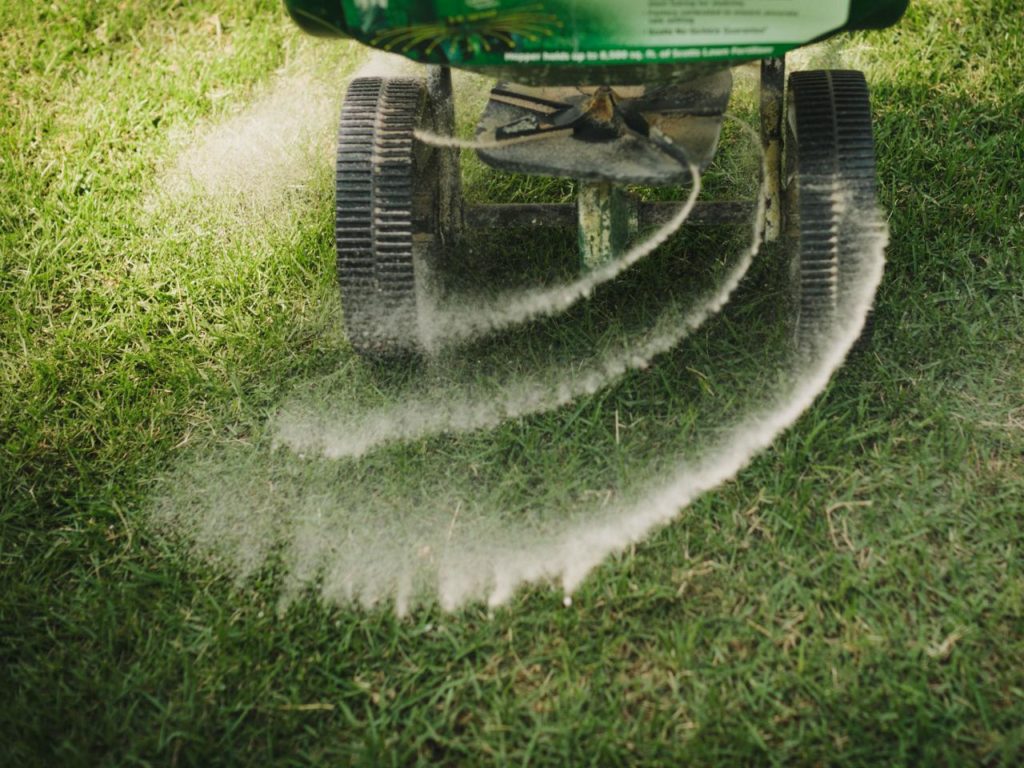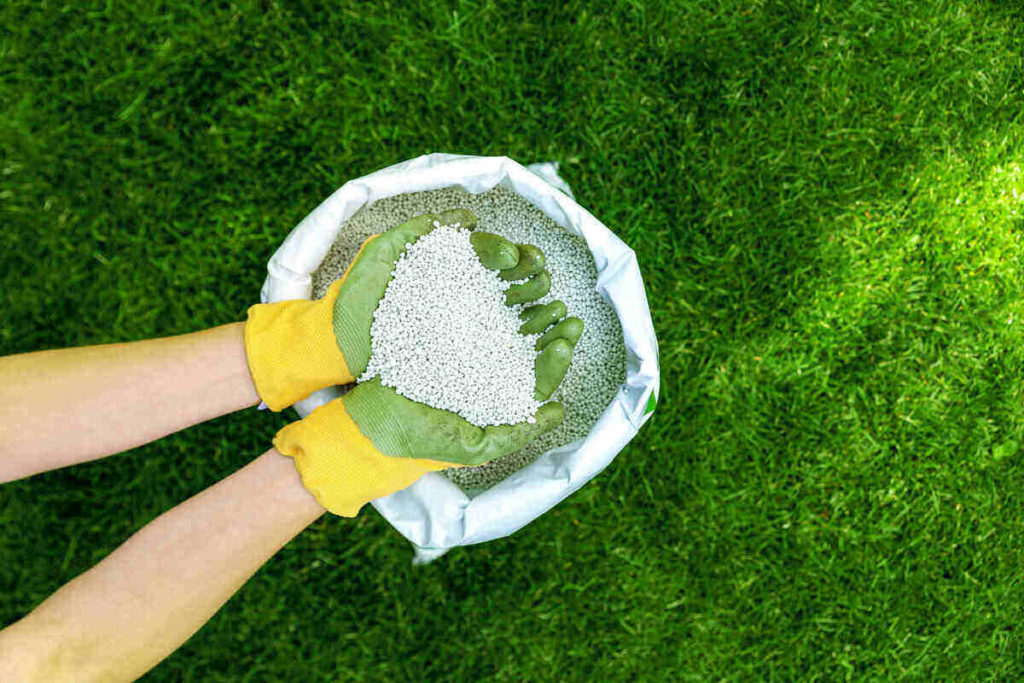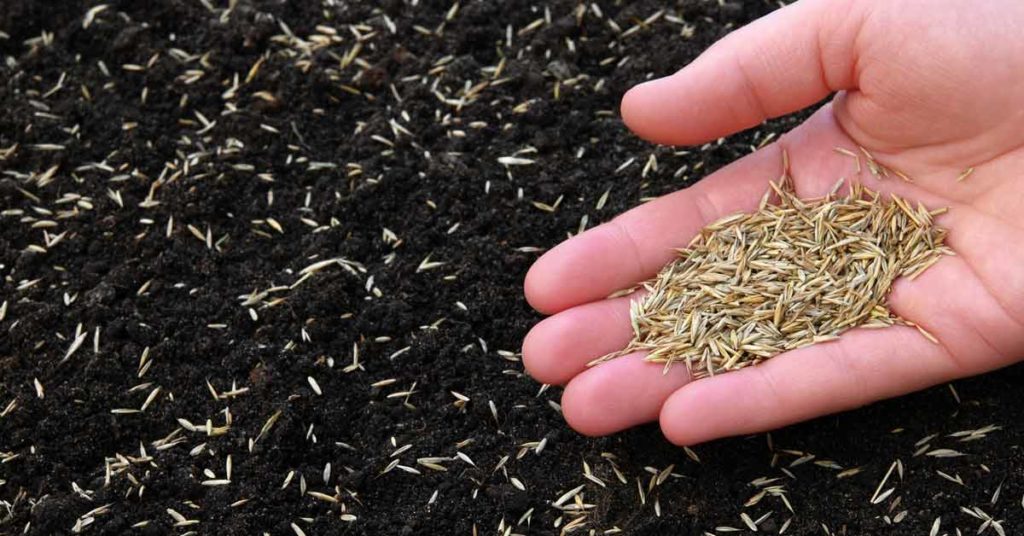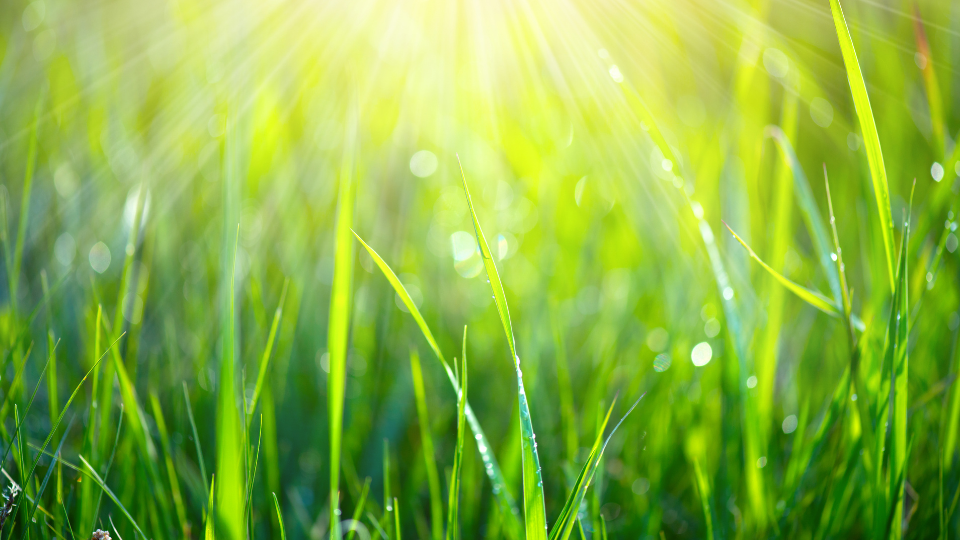Spring is one of the best times of year to seed a new lawn because the weather is warm, and the seeds germinate quickly. In order to seed a new field successfully, the first and most important step is to prepare the seedbed. The seedbed must be properly prepared in order to achieve good seed-to-soil contact.
Lawns that are lush, thick, and green require the appropriate amount of nutrients at the appropriate time to look and grow their best. Fertilizing your lawn at the appropriate time and properly can make your grass stand out from the rest of the lawn.
It is recommended to fertilize your new grass after four to six weeks of planting it. After sprouting, fertilization should be continued for four to six weeks. Nowadays, there is a wide choice of nitrogen-rich starter fertilizers for new grass available for purchase. Use a 20-20-10 NPK combination on new grass to keep it healthy.
Incorporating fertilizer into your soil may positively affect the overall wellness of your garden or yard. The three basic nutrients in fertilizer are nitrogen (NPK), phosphorus (P), and potassium (K). Weeds, pests, fungus, erosion, runoff, and uneven grass are all less likely to thrive in good soil than they would be in poor soil.
On soil that is lacking in nutrients, growth might be tough. On the contrary, applying too much or the incorrect fertilizer may seriously impact the soil in your area, including burning. So it is recommended to know about the everything about the fertilizer before you start fertilizing your new grass.
Things to Know When to Fertilize New Grass

Fertilization is frequently regarded as an afterthought, something to be completed after the plants have been planted or the turf has been set. It’s a mistake to wait so long. the following are the optimal times to fertilize your new sod:
- Before you plant the seed,
- The time when seeds are being sowed
Fertilizing grass seeds sooner rather than later will provide them with a nutritional “boost,” allowing them to take root and establish themselves faster. Before you lay down your new turf, make sure you plow in the starter fertilizer. Fertilizer should not be applied more than four inches below the soil surface.
This is important because if you apply too much fertilizer to your lawn’s roots, it could cause the grass to die. After you’re through, level the dirt with a rake, and you’ll be ready to lay the fresh sod.
Choose the Right Fertilizer for Your New Grass

To begin, learn as much as you can about the soil and the growth region where you wish to apply fertilizer. Then, calculate the square footage of your new lawn to determine how much fertilizer you’ll need for it. Next, perform a soil test to determine which nutrients are present in your soil and which nutrients are lacking.
Soil testing may sound intimidating, expensive, and sophisticated, but it is actually quite simple. In most regions, you will have a large variety of options from which to choose. You can even send soil samples to the agriculture department and have the results returned to you!
Knowing the nature of your soil can help you establish the optimal fertilizer ratio for your grass. Fertilizing with only nitrogen is a popular choice for homeowners who find that their lawns already contain adequate amounts of phosphorus and potassium.
Avoid overdosing on phosphorus. The phosphorus levels in soils can quickly climb to unsafe levels, resulting in polluting runoff into the surrounding ecosystem. As a result of this approach, fish habitats may be harmed, and algal blooms may become more prevalent.
Some homeowners are looking for advice on lawn fertilizer, and some are already using it. Due to the increased demand for organic fertilizers among homeowners seeking to maintain a healthy lawn while avoiding the use of chemical products on their property, organic fertilizers have become increasingly popular.
How Soon After Seeding Should You Fertilize Your Lawn?

Your grass has been sown, so after it is, how soon should you start using your new regular fertilizer? It would be best to wait at least a week before re-fertilizing your new grass, no matter how much you want to speed up the process. It will take around four weeks to a maximum of eight weeks.
Runoff caused by over-fertilization can cause injury to water-dwelling creatures as well as contamination of the water supply if the roots do not properly absorb nutrients. Over-fertilizing can actually deplete the soil of nutrients, resulting in a shortage of nutrients in your new turf when it’s time to reseed when the season changes.
Therefore, it is important not to re-fertilize too soon, resulting in contamination. The following fertilization schedule might be followed:
Also Read: How Long Does Fertilizer Take to Work? All You Need to Know
Fertilization in Summer
Late spring and early summer fertilization are perfect for newly planted or neglected lawns. However, if you want to assist your grass in growing, you can apply slow-release nitrogen fertilizer at 45-to-60-day intervals during the growing season. As a result, if you use slow-release nitrogen, you will not have to mow your grass as frequently because the grass will not grow uncontrollably.
Fertilization in the Fall
By applying fall fertilizer to the lawn, you can increase the density of the grass. The application of fertilizer in the fall also aids in the avoidance of weed invasion throughout the winter months.
In addition, by providing extra nutrients to your grass in the fall, you may improve the color of your lawn all season long as a result of the increased nutrition. Finally, fertilizer helps in the recovery of your grass in the spring.
Nitrogen fertilizer should be applied at rates of no more than one pound per 1,000 square feet in order to avoid leaching and overflow. It’s also a good idea to apply your final fertilizer batch well before the fall season’s first frost.
It is recommended that fertilization be completed by November 1, which varies from region to region.
Fertilization in the Spring
The beginning of March or the beginning of April is a good time to begin feeding your lawn and garden in preparation for the forthcoming growing season. Due to the fact that this varies widely from place to region, keeping an eye on the condition of your grass is another helpful indicator.
It is necessary for the grass to turn green and needs at least two mowing before spring fertilizer can be applied. Also, make certain that you are mowing grass rather than weeds; weeds can be cut much earlier, but they do not count toward this requirement.
Reasons for Fertilizing Newly Planted Grass

Regular fertilizer contains the most important nutrients for sowing and growing a new lawn and other essential nutrients. Additionally, due to the fact that it promotes healthy root growth, it is a key component of effective grass management. As a result, enriching your soil before you sow seed is a fantastic technique to expedite the growing process. The following are some more instances in which the application of fertilizer would be beneficial to a lawn care regimen:
- Absence of Direct Sunlight
It takes four to six hours of direct sunlight every day for the majority of lawns to flourish. - Watering is Quite Rare
If you are unable to water frequently or do not have an automatic irrigation system to keep the soil moist, fertilizer may be able to compensate for this. - Increasing the Rate of Progress
A new lawn is no exception to the fact that fertilizers are widely used to accelerate the growth rate of plants, and it is no secret that fertilizers are commonly used to accelerate the growth rate of plants. - Prevent weed and lawn concerns
As opposed to conventional fertilizer, high-quality fertilizer improves the soil’s resistance to erosion, brown patches, grass fungus, red thread, snow mold, and summer patching by making it more resistant to these conditions.
Also Read: 5 Best Weed and Feed for Lawn – Get a Top-drawer Garden that Outstands Everything
Frequently Asked Questions
Choose a fertilizer that will last longer and require fewer applications in the spring to ensure a healthy lawn this season. A section titled “guaranteed analysis” is located on the back of the packaging and contains all of the information you need about the fertilizer. However, keep in mind that there are nitrogen sources that are both fast-release and slow-release.
Specifically, you seek nitrogen with a slow-release or a regulated, fast release and is granules or liquid. Some examples of specialized varieties include urea in liquid form, sulfur-coated urea, polymer-coated urea, and IBDU.
Organic nitrogen sources that can be slow-released are available if you desire a more natural, less artificial source of nitrogen than synthetic nitrogen sources.
The fast-release fertilizer provides both quick color and long-lasting nitrogen, with the most high-quality lawn fertilizers blend sources that release nutrients quickly and gradually.
You’ll know right away whether you’ve done a good job fertilizing your lawn since the results will be visible. Fertilization results should be visible one to five days after application, depending on the type of fertilizer you used.
It is also possible that over-fertilizing your turf will cause damage to the root system of the turf. Using excessive nitrogen in fertilizer, especially in large quantities, might be harmful. A burning sensation is almost always due to soluble salts.
The frequency with which you water your plants directly impacts the amount of fertilizer you’ll need. Lawns that are watered regularly require more fertilizer than lawns that are not watered at all. As the grass grows, it consumes an increasing amount of nutrients.
Even if you have an automatic irrigation system, you should fertilize your grass every six weeks at the absolute least.
In order for your lawn’s growth cycle to be negatively influenced, you must avoid overwatering and under fertilizing it. There is an additional two-week grace period for people who do not have sprinkler systems installed.
It is recommended that you read your fertilizer label for advice on whether or not you should water your lawn before or after applying it. When granulated fertilizers are applied, moisture is required for them to break down, while other fertilizers must be soaked before being applied.
Conclusion
Implementing a well-defined procedure and ensuring consistent lawn care and maintenance routine is not tough when it comes to laying sod or seeding grass seedlings. The most important aspect of good lawn management is to apply the optimum amount of starting fertilizer at the appropriate time and avoid overdoing it.
Fresh grass needs to be fertilized at different times, depending on where you live and the environment. If you want to get the most out of your strategic approach, start with a starter fertilizer that is high in nitrogen and phosphorus to produce the best results. These nutrients provide it with the boost it requires to thrive more quickly and lushly.
